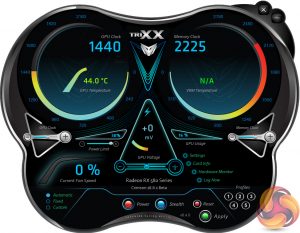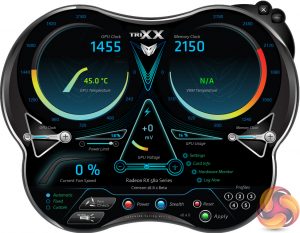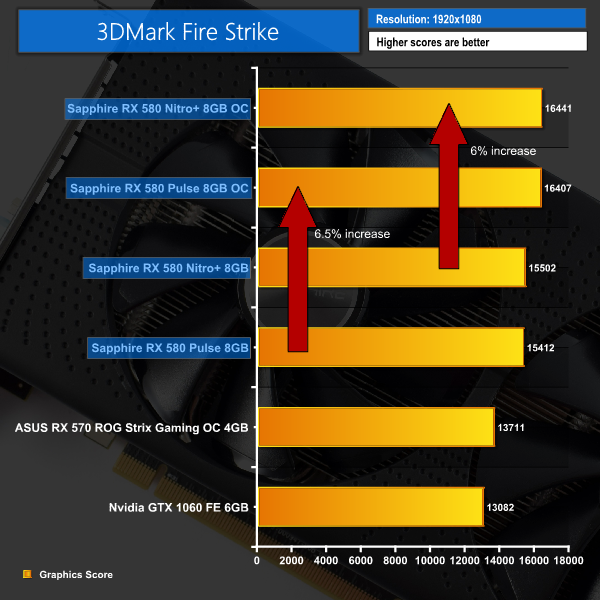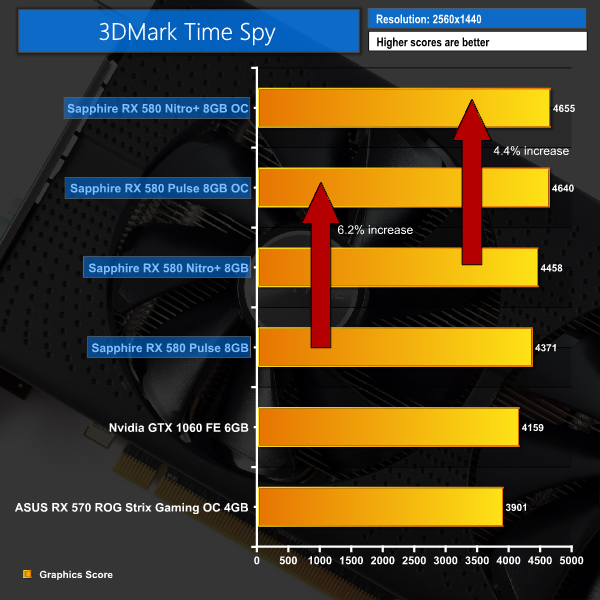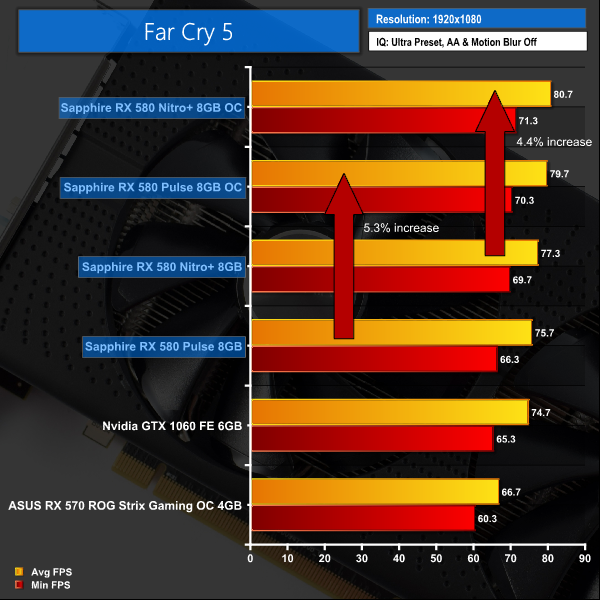Pulse – left, Nitro+ – right
To overclock both Sapphire cards, we used TriXX – Sapphire's overclocking utility.
For the Pulse, our best result came with 1440MHz (+74MHz) on the core, and 2225MHz (+225MHz) for the memory. The power limit was set to its maximum value (+30%) and we used the auto fan curve.
For the Nitro+, our best result came with 1455MHz (+44MHz) on the core, and 2150MHz (+150MHz) for the memory. The power limit was set to its maximum value (+50%) and we used the auto fan curve.
There is definitely some benefit to overclocking these cards. We know the RX 500 series cards are generally limited overclockers – the chip can only go so far, and most of them are pushed pretty far out of the box anyway. I was still quite impressed with +74MHz to the Pulse card, though – it may not be as fast as the Nitro+, but relatively speaking it is a bigger overclock. That closed the frequency gap between the two cards to just 15MHz.
In the real world, this put the two cards neck-and-neck – a score difference of just 34 in Fire Strike, and just 15 in Time Spy, is incredibly close. The difference was just 1FPS on average in Far Cry 5, too.
 KitGuru KitGuru.net – Tech News | Hardware News | Hardware Reviews | IOS | Mobile | Gaming | Graphics Cards
KitGuru KitGuru.net – Tech News | Hardware News | Hardware Reviews | IOS | Mobile | Gaming | Graphics Cards


